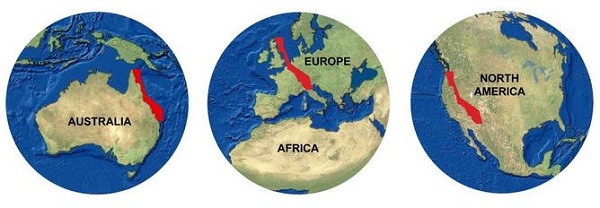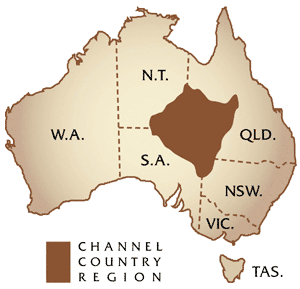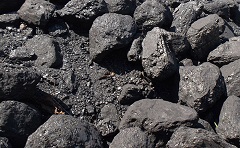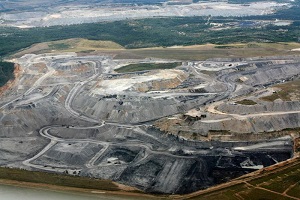This post was written back when the issues of Abbot Point expansion and the dumping of waste in the Great Barrier Reef Marine Park area were current. Now the Queensland Land Court has recommended the State Government reject the multi-billion dollar GVK-Hancock Alpha Coal project in the Galilee Basin. The decision is a non-binding recommendation to the State Government. If they go ahead, conditions have been suggested.
Impact on groundwater was the main concern of local landowners.
It looks to me as though this decision will not in the end impede the construction of the mine. Nevertheless there are concerns also about the economic viability of both the coal mines and the port expansion, as I discuss in the post.
Abbot Point and the Marine Park
Recently the Abbot Point port expansion proposal has caused a great deal of controversy because of the proposed dumping of 3 million tonnes of sludge within the Great Barrier Reef Marine Park area. The contention is that the Great Barrier Reef Marine Park Authority (GBRMPA) initially found against the dumping. In January this year GBRMPA approved the dumping.
Professor Russell Reichelt, chair and chief executive of the Great Barrier Reef Marine Park Authority, makes clear at The Conversation that the material to be dumped is not toxic and while the Authority would prefer placing dredge material on land, “providing it does not mean transferring environmental impact to sensitive wetlands connected to the reef ecosystem”, they are comfortable with the proposed plans.
The material to be dumped is about 60% sand and 40% silt and clay, similar to what you would see if you dug up the site where the material is to be relocated. The target area is a defined 4 square kilometre site free of hard corals, seagrass beds and other sensitive habitats, about 40 kilometres from the nearest offshore reef.
The Marine Park itself is about the size of Italy:

In a comprehensive discussion of the Abbot Point expansion and the Galilee Basin Radio National’s Background Briefing implies that the Abbot Point expansion will not be supervised. The story is told of how in the previous expansion contractor John Holland effectively ignored environmental regulations and was fined a token $195,000 as a result. Professor Reichelt specifies what is to happen this time:
we will have a full-time staff member from GBRMPA located at the port to oversee and enforce compliance during dredge disposal operations. This supervisor has the power to stop, suspend or modify works to ensure conditions are met.
In addition, an independent technical advice panel and an independent management response group will be formed. Membership of both these bodies will need the approval of GBRMPA.
Importantly, the management response group will include expert scientists as well as representatives from the tourism and fishing industries, and conservation groups. Together, GBRMPA and those other independent scrutineers will be overseeing the disposal, and will have the final say — not North Queensland Bulk Ports, which operates Abbot Point, or the coal companies that use the port.
This overview is worth quoting:
Our recent assessments show the dominant risks to the health of the reef are the effects of climate change, excess sediment and nutrient run-off (such as from widespread floods), outbreaks of coral-eating starfish, extreme weather, and some types of fishing.
Coastal development such as ports are assessed as significant but local in their effects.
The effects of climate change.
Watching Greens Senator Larissa Waters debate the Abbot Point expansion with the relevant Qld government minister was like being in an alternate reality. There was no mention of the climate effects of the coal to be exported, no mention of the warming and ocean acidification impact on the reef.
No mention of the impact of the monster mines on the local environment, the use of local aquifers, of the possibility of toxic runoff into the river systems and flood plains the the southwest, the Channel Country and Lake Eyre. As I said last year in Galilee Basin coal: a vision splendid or a kind of madness?:
Water is in fact a considerable issue, as the area has only 400 to 500mm rainfall pa, seasonal and highly variable. Artesian aquifers and water from coal seam gas are being considered. Pastoralists are naturally worried as are environmentalists. The area can be subject to heavy rains which ends up with a toxic brew from open-cut mines being pumped into water courses. The basin drains towards Lake Eyre, (now officially known as Kati Thanda–Lake Eyre).
This image is from an organic beef producer and their enthusiasm has expanded the area to include the whole Simpson’s Desert, but it gives an idea of the part of the country we are talking about:

Moreover the railway line or lines will cut across grazing lands on expansive flood plains, making water movement highly problematic with heavy rain.
Economics of the mining projects
Mercifully both projects look wildly uneconomic. The Background Briefing story quotes a UBS commodities analyst who says that for the Galilee Basin to be profitable the coal price would have to be around AU$110 per tonne. Their long term estimate is $80 per tonne. The program saw India rather than China as being the most prospective customer. India is running out of coal that can be mined, but the current price there is about $23 per tonne (I presume US$). They need electricity for hundreds of millions who rely on wood or cow dung for cooking and heating, but not at any price.
John Quiggin has two posts about companies pulling out and the shaky economics of both projects:
Following a similar announcement last week by Lend Lease, and earlier announcements by BHP Billiton annd Rio Tinto, mining company Anglo American has withdrawn its proposal to take part in the expansion of the Abbot Point coal terminal. That leaves only two proposals, both from Indian companies owned by billionaire entrepreneurs reminiscent of Bond, Skase and other Australian heroes of the 1980s. Both Adani and GVK are heavily indebted conglomerates of the type that invariably emerge when money is cheap, and mostly collapse when the tap is turned off.
It’s not surprising that these companies have not yet abandoned their bids. Doing so would involve booking huge losses on their mining prospects in the Galilee Basin. But, it’s hard to believe anyone is going to lend them the billions required, not just for the port expansion, but for a 500km rail line and the mine itself. The price of coal is well below the level required to cover the costs of extraction and transport, let alone to provide a return on capital. And if Adani and GKV don’t build the rail lines, the development of the entire Basin will grind to a halt.
Here’s hoping!
Update: Mark Colvin discusses the economics of the mine with the ABC’s business editor Ian Verrender, confirming concerns.






 These posts are intended to share information and ideas about climate change and hence act as an open thread. This post has emphasised adaptation and mitigation, essentially what we need to do to achieve a safe climate.
These posts are intended to share information and ideas about climate change and hence act as an open thread. This post has emphasised adaptation and mitigation, essentially what we need to do to achieve a safe climate.